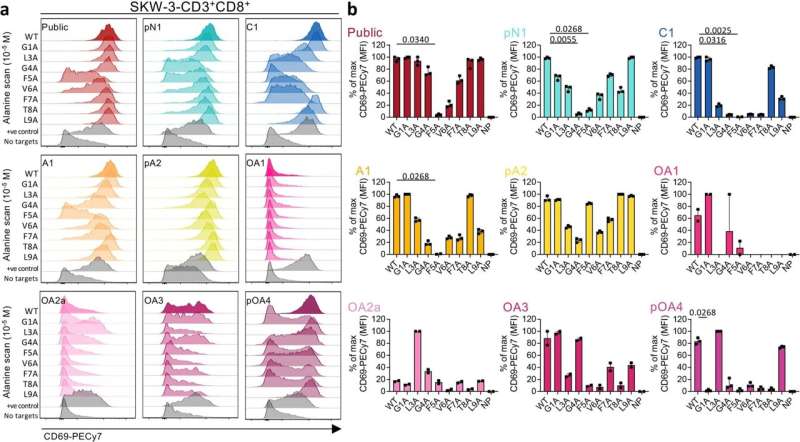This article has been reviewed according to Science X's editorial process and policies. Editors have highlighted the following attributes while ensuring the content's credibility:
fact-checked
peer-reviewed publication
proofread
Study finds immune cells in older adults resemble those in newborns and children, but fall short in virus detection

A world-first discovery has revealed special immune cells called "killer T cells" in older adults, directed against influenza viruses, closely resemble those found in newborns and children, but struggle to recognize infected cells—a finding that unlocks the potential for the development of better vaccines and therapies tailored to different age groups.
Killer T cells (also known as CD8+ T cells) play a critical role in the immune system by eliminating virus-infected cells. While much has been studied about these immune cells in adults, little was known about how they evolve and function across the human lifespan—until now.
In a pioneering research published in Nature Immunology and led by the Peter Doherty Institute for Infection and Immunity (Doherty Institute) and UNSW Sydney, researchers employed cutting-edge technologies to examine killer T cells in different age groups—newborns, school-aged children, adults and older adults (60+ years)—to understand how age shapes our immunity to influenza viruses.
University of Melbourne's Dr. Carolien van de Sandt, a Senior Research Fellow at the Doherty Institute and first author of the paper, said the team uncovered unexpected similarities in T cell responses between newborns/children and older adults.
"Based on previous studies, we expected to find that killer T cells in older adults were less effective because they had become exhausted or 'fallen asleep'," said Dr. van de Sandt.
"However, to our surprise, the very efficient killer T cells that we detected in children and adults seemed to actually disappear and be replaced with suboptimal cells in older adults. It is almost as if you replace the sword of a Roman soldier with a kitchen knife; they can learn how to use it, but it will never be as efficient as the sword."
"One of the most intriguing findings of the study was that these cells, with a lower ability to recognize influenza viruses, displayed gene features closely similar to T cells found in newborns."
University of Melbourne's Professor Katherine Kedzierska, Head of the Human T cell Laboratory at the Doherty Institute and senior author on the paper, said this research greatly contributes to our understanding of how immunity changes over an individual's lifespan, and has the potential to significantly advance the field of vaccinology.
"Our findings suggest that if we want to boost killer T cells through vaccination, the timing may play an essential role to maintain these optimal killer T cells into old age," said Professor Kedzierska.
"This study is a turning point for the research into aging immunity. It has far-reaching implications and opens up new possibilities for the development of better vaccines and therapies tailored to different age groups."
This work was conducted in collaboration with Associate Professor Fabio Luciani, co-senior author from UNSW Sydney. Associate Professor Luciani said the study provides valuable insights into the complexity of killer T cell responses as we age.
"Importantly, we utilized new machine learning methods to reconstruct how these influenza virus-specific killer T cells develop over the lifespan. As individuals grow, killer T cells get stronger and more effective at eliminating infected cells, but they disappear in older adults, where they are taken over by cells with a lower killing capacity," he said.
More information: C.E. van de Sandt et al, Newborn and child-like molecular signatures in older adults stem from age-related TCR repertoire shifts across the human lifespan, Nature Immunology (2023). DOI: 10.1038/s41590-023-01633-8. www.nature.com/articles/s41590 … s/s41590-023-01633-8



















